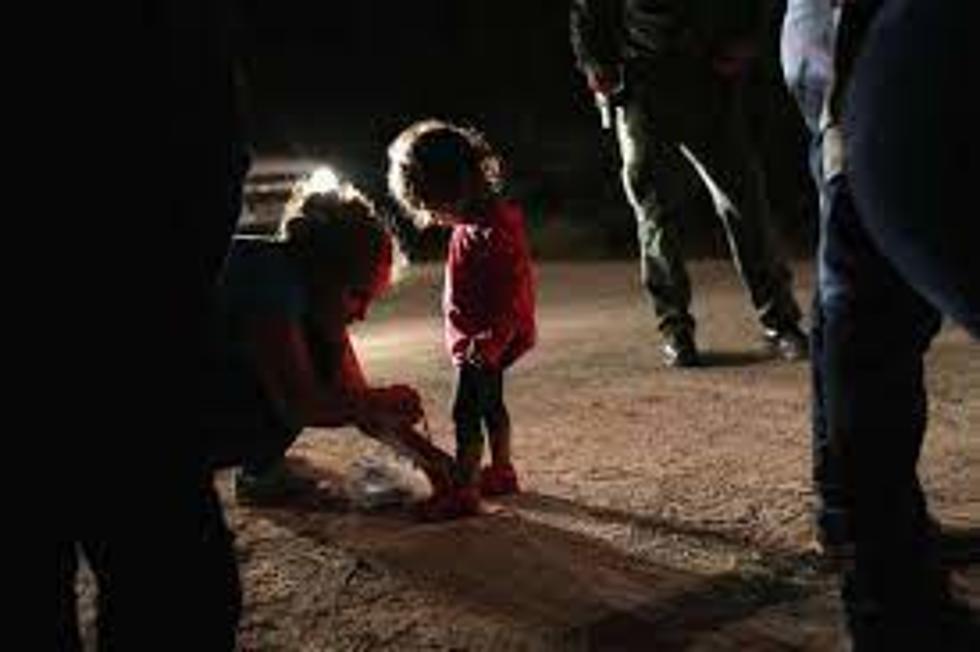
Temple PD Responds to Frequently Asked Questions
The following is a message from Chief of Police Shawn M. Reynolds:
"During my first few weeks in Temple, the Police Department has received several questions regarding the state of relations between police and the public, both in our community and throughout the country.
After listening to those conversations, we have done our best to consolidate answers to several of the questions we have received frequently.
I would also like to reassure residents that the Department has a comprehensive set of policies and procedures which all officers are required to follow. Last year, TPD received recognized status under the Texas Police Chiefs' Association Best Practices Accreditation. Requirements for entry into the program included a two-year application and review process where the Department's policies and procedures were thoroughly examined. TPD is one of just 152 departments within the state to receive such a distinction.
I believe it is important that residents take an active role in their communities, and it is encouraging to see so many Temple residents doing just that. We are grateful for the opportunity to have an open dialogue and we look forward to many more productive conversations in the future."
Does TPD follow the recommendations of the “8 Can’t Wait” campaign?
Temple PD meets the requirements of seven of the “8 Can’t Wait” recommendations. The Department does not require officers to exhaust all alternatives before using deadly force if the circumstances would make it unreasonable to do so.
If so, which criteria is Temple PD complaint with?
- Ban Chokeholds and strangleholds: Officers should not intentionally use any technique that restricts blood flow to the head, restricts respiration, or which creates a reasonable likelihood that blood flow to the head or respiration would be restricted. Officers are encouraged to use techniques and methods taught by the Temple Police Department. (Use of Force 300.3.4)
- Require De-escalation: Peaceful conflict resolution strategies are generally always attempted prior to a use of force, if practicable.
- Require warning before shooting: Per TPD Policy (Use of Force 300.4), a verbal warning should precede the use of deadly force where feasible.
- Duty to intervene: Any officer present and observing another officer using force that is clearly beyond that which is objectively reasonable under the circumstances shall intercede to prevent the use of unreasonable force and immediately report the incident to the supervisor. (Use of Force 300.2.1)
- Ban shooting at moving vehicles: The Department’s Use of Force Policy states that shooting at or from moving vehicles is rarely effective and discourages such actions. Officers should move out of the path of an approaching vehicle instead of discharging their firearm at the vehicle or any of its occupants. Officers should not shoot at any part of a vehicle in an attempt to disable the vehicle. (Use of Force 300.4.1)
- Require use of force continuum: The Department’s Use of Force Policy clearly outlines what types of force are acceptable for various interactions. TPD policy provides guidelines on the reasonable use of force. While there is no way to specify the exact amount or type of reasonable force to be applied in every situation, every member of this Department is expected to use these guidelines to make such decisions in a professional, impartial, and reasonable manner. These decisions are based on several factors used to determine the reasonableness of force, as time and circumstances permit. (Use of Force 300.5)
The continuum or levels of force that may be utilized is as follows:
a. Officer Presence
b. Verbal Direction/Command
c. Soft Empty Hand Control:
- Pain compliance holds
- Non-striking pressure point control tactics
- Escort Techniques
d. Intermediate Techniques;
- Chemical agents
- Strikes and Kicks
- Takedowns
e. Impact Weapons, and
- Baton strikes
- Less lethal munitions (Taser, bean bags, foam projectiles, pepperball)
- K-9
f. Lethal Force
(Use of Force 300.3.3)
- Require comprehensive reporting: Any use of force by a member of this Department shall be documented promptly, completely, and accurately in the Departments approved Use of Force Report form, depending on the nature of the incident. The officer should articulate the factors perceived and why he/she believed the use of force was reasonable under the circumstances. Officers are required to report each time they use force. Every use of force is documented and reviewed by supervisors review to determine if the use of force was appropriate and reasonable. (Use of Force 300.5) The Temple Police Department produces an annual Use of Force Report, which highlights details such as in-custody deaths and officer-involved shootings. These reports are available on the Department’s website: www.templetx.gov/2541/Use-of-Force-Reports
TPD does not require officers to exhaust all other alternatives prior to using deadly force. Why is that?
Because each incident is unique and can change at a moment’s notice, it is not reasonable to require that officers exhaust every alternative prior to using deadly force in every situation.
Use of deadly force is justified in the following circumstances involving imminent threat or imminent risk:
- An officer may use deadly force to protect him/herself or others from what he/she reasonably believes would be an imminent threat of death or serious bodily injury, and
- An officer may use deadly force to stop a fleeing subject when the officer has probable cause to believe that the individual has committed, or intends to commit, a felony involving the infliction or threatened infliction of serious bodily injury or death, and the officer reasonably believes that there is an imminent risk of serious bodily injury or death to any other person if the individual is not immediately apprehended. Under such circumstances, a verbal warning should precede the use of deadly force, where feasible.
(Use of Force 300.4)
Officers are permitted to use deadly force if such force is justified by the facts and circumstances of the situation. Officers are not required to exhaust all other means in circumstances in which that is not practicable, such as situations where there is no reasonable doubt that there exists a threat to human life without armed intervention.
Do police officers in Temple target specific ethnic groups?
No. TPD does not tolerate discrimination of any kind and has comprehensive policies against racial or discriminatory profiling. Every officer and patrol vehicle makes use of body worn and dash cameras in for the purpose of protection and accountability. Officers are also required to complete biannual training on racial profiling, cultural diversity, and other social issues.
The department also publishes an annual Biased Based Policing Report which identifies and addresses any trends that may suggest racial profiling exists. That report is available online at www.templetx.gov/2471/Bias-Based-Policing
What is TPD’s policy on use of force?
Officers shall use only an amount of force that reasonably appears necessary given the facts and circumstances perceived by the officer at the time of the event to accomplish a legitimate law enforcement purpose (Use of Force 300.3).
The reasonableness of force will be judged from the perspective of a reasonable officer on the scene at the time of the incident. Any evaluation of reasonableness must allow for the fact that officers are often forced to make split-second decisions about the amount of force that reasonably appears necessary in a particular situation, with limited information and in circumstances that are tense, uncertain, and rapidly evolving (Graham v. Connor)
What factors are used to determine the reasonableness of force?
When determining whether to apply force and evaluating whether an officer has used reasonable force, a number of factors should be taken into consideration, as time and circumstances permit (Use of Force 300.3.2). These factors include, but are not limited to:
- Immediacy and severity of the threat to officers or others;
- The conduct of the individual being confronted, as reasonably perceived by the officer at the time;
- Officer/subject factors (e.g., age, size, relative strength, skill level, injuries sustained, level of exhaustion or fatigue, the number of officers available vs. subjects);
- The effects of drugs or alcohol;
- Individual’s mental state or capacity;
- Proximity of weapons or dangerous improvised devices;
- The degree to which the individual has been effectively restrained, and his/her ability to resist despite being restrained;
- The availability of other options and their possible effectiveness;
- Seriousness of the suspected offense or reason for contact with the individual;
- Training and experience of the officer;
- Potential for injury to officers, suspects, and others;
- Whether the individual appears to be resisting, attempting to evade arrest by flight, or is attacking the officer;
- The risk and reasonably foreseeable consequences of escape;
- The apparent need for immediate control of the individual, or a prompt resolution of the situation;
- Whether the conduct of the individual being confronted no longer reasonably appears to pose an imminent threat to the officer or others;
- Prior contacts with the individual, or awareness of any propensity for violence, and
- Any other exigent circumstances.
How does TPD prevent use of excessive force?
TPD does not condone the use of excessive force. Officers are trained to only use an amount of force which is objectively reasonable under the circumstances of the current situation.
Every use of force is thoroughly reviewed by the department. If a supervisor believes an officer may have used unauthorized or frequent force, the department will conduct an Internal Affairs investigation.
If it is determined the officer used excessive force, the officer will face discipline up to and including termination, as consistent with Civil Service laws and regulations.
Does TPD publish any reports pertaining to use of force?
Yes. TPD releases an annual Use of Force Report which provides details on instances where an officer used physical force during interactions with the public. These reports are thoroughly analyzed to ensure that officers use appropriate and necessary levels of force. That report is available online at www.templetx.gov/2541/Use-of-Force-Reports.
Are TPD applicants screened prior to becoming an officer?
Yes. Applicants are thoroughly vetted during the hiring process through extensive background checks, psychological and polygraph examination, and board interviews. If an applicant shows any discrepancy which does not follow the standards of TPD, then they will not complete the hiring process.
What are some factors that will disqualify someone from becoming a police officer in Temple?
- Conviction of a Class A or higher (felony)
- Conviction of a Class C, or pending a charge involving moral turpitude (must wait 5 years)
- DWI (must wait 10 years)
- Misdemeanor for narcotics (must wait 2 years for experimental use, or 3 years for consecutive use)
- Felony for narcotics (must wait 3 years for experimental use, or 5 years for consecutive use)
- Conviction of 4 or more moving violations within 5 years, 3 or more within 2 years, or 2 within 12 months; OR 2 at fault traffic accidents within 3 years.
- Any combination of moving violations with an at fault accident within 3 years.
- Driver’s license suspended or revoked for any reason within 5 years.
- Unsatisfactory prior service either military or law enforcement.
- Mentally or physically unfit to perform the duties required by the job.
- Having ever used or sold an illicit substance.
- Not being in good moral character.
More information on employment requirements can be found online at jointemplepd.com
Why aren’t the videos from body worn cameras released to the public?
The Texas Occupations Code and the Texas Government Code govern release of recordings made by law enforcement officers’ body worn cameras.
Section 1701.660 of the Texas Occupations Code (TOC) addresses the release of recordings created with an officer’s body worn camera that documents an incident involving the use of deadly force by an officer, or that is otherwise related to a disciplinary or criminal investigation of a police officer. The following rules apply to this specific type of body worn camera recording:
The (TOC) generally prohibits release to the public of a recording created with a body worn camera that documents an incident involving the use of deadly force by a police officer, or that is otherwise related to a disciplinary or criminal investigation of a police officer until all criminal matters have been finally adjudicated and any disciplinary investigations have concluded.
The TOC permits a law enforcement agency to allow a person who is depicted in this type of recording or, if the person is deceased, the person’s authorized representative, to view the recording if the agency determines that a law enforcement purpose would be served, and if the person viewing the recording was not a witness to the incident. The authorized person may be allowed to view the recording but is not permitted to duplicate or capture video or audio from the recording. Allowing an authorized person to view the recording is not a public release of the recording for purposes of the Texas Public Information Act.
The TOC also permits a law enforcement agency to release this type of recording to the public if the agency determines that a law enforcement purpose would be served by doing so.
Unauthorized release of a body worn camera recording by a police officer or other employee of a law enforcement agency is a Class A misdemeanor.
Section 552 of the Texas Government Code, also known as the Texas Public Information Act, authorizes a law enforcement agency to withhold information, including recordings made by officers’ body worn and dash cameras, in two specific instances.
First, an agency may withhold information that deals with the detection, investigation, or prosecution of a crime if releasing the information would interfere with the ongoing detection, investigation or prosecution of crime.
Second, an agency may withhold information related to any closed criminal investigation that did not result in a conviction or a deferred adjudication community supervision.
What are the demographics of TPD Officers?
The Temple Police Department strives to maintain a workforce that is representative of the community it serves. The following chart provides a breakdown of demographics within the sworn members of this department.
Since 2009, the department’s minority ranks have grown. In 2009, minorities (such as those listed in this report) represented 20.6% of the officers employed by this agency. Today that number is 24%.
The City of Temple population demographics are 54% white, 17% black, 23% Hispanic/Latino, 2% Asian/Pacific Islander. Note: These figures are from the 2010 census.
More From KLTD-FM









